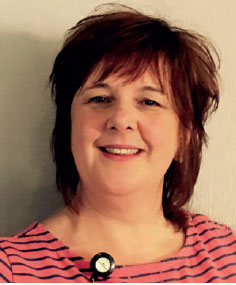Daily Dynamic Approach in the community: Highland improvement story part one
An example of successful discharge planning in the Highland Health and Social Care Partnership.
Proactive Discharge Planning in a Community Setting
When it comes to healthcare improvement, someone with a vision and passion for making things better for patients can kickstart a process of change. A committed change agent who can clearly articulate their vision can help to initiate much-needed improvement. However, for the change to be sustained, it needs to be embraced and embodied by the whole team. This story from the Highland Health and Social Care Partnership shows how one nurse helped to inspire an entire team. This, in turn, has led to a bigger piece of work which has the potential to transform discharge planning across the Highlands. This is part one of the Highland improvement story…
Proactive Discharge Planning in a Community Setting
Acute hospitals are increasingly aware of the importance of patient flow in managing unscheduled care pressures. The correlation between discharging patients in a timely way and meeting the four-hour Emergency Access target has prompted many acute hospitals to adopt proactive approaches to discharge planning.
It is more unusual for community hospitals to take such an approach to discharging patients, as they are not subject to the same patient flow pressures as their colleagues in acute. However, community hospitals in NHS Highland have adopted the Daily Dynamic Discharge model, developed by the Scottish Government's 6 Essential Actions to Improve Unscheduled Care programme, as a way of improving the flow of patients into the community and supporting their colleagues in the acute setting. It is early days but teams are already noticing some important efficiency improvements…
Daily Dynamic Discharge is a key part of the 6 Essential Actions to Improve Unscheduled Care programme. These are the six actions regarded as fundamental for improving the experience, safety and care of patients during episodes of unscheduled care [1] .
Some of the components of Daily Dynamic Discharge are:
- Dynamic multidisciplinary team planning - the team meets within 12 hours of a patient's admission to discuss their discharge plan
- Setting an Estimated Discharge Date ( EDD) within 24 hours of the patient's admission to the ward - assessing and documenting the date of predicted medical fitness within the care management plan
- Effective ward rounds - using a set of questions to prompt the right discharge discussions for each patient
- Daily whiteboard meetings - brief morning meeting to prioritise the day's tasks, which will be owned by members of the multidisciplinary team, to prevent any delays in discharging patients
- Golden Hour ward rounds - a way of ordering which patients are seen first during the ward round, determined by clinical need and proximity to discharge
- Non-slip task management - a daily task sheet created by the facilitator of the morning meeting, and which is reviewed at the afternoon meeting
- Check, Chase, Challenge - a senior member of the hospital is invited to challenge estimated discharge dates or tasks that do not contribute to timely discharge
- Ward access targets - ensuring wards understand what capacity they should be aiming for
- Pre-noon discharge - discharge earlier in the day to align capacity with demand
There are six community hospitals across the Inner Moray Firth area, linked closely to Raigmore Hospital in Inverness. These community hospitals mostly care for older patients with complex health and social care needs. Lead Nurse for the Highland Health and Social Care Partnership, Kate Patience Quate believes passionately that the standard of care in community hospitals should equal that provided by the acute hospital. She heard about the Daily Dynamic Discharge model, developed by the 6 Essential Actions for Unscheduled Care National Programme team, and was keen to explore whether it could be used to standardise discharge planning practice in the community hospitals and improve flow across all the hospitals in the Inner Moray Firth area.

"We recognised that we needed to be more dynamic and move towards a seven-day approach to transferring and discharging patients."
Kate Patience Quate,
Lead Nurse, Highland Health and Social Care Partnership
Contact
Email: Jessica Milne
Phone: 0300 244 4000 – Central Enquiry Unit
The Scottish Government
St Andrew's House
Regent Road
Edinburgh
EH1 3DG
There is a problem
Thanks for your feedback